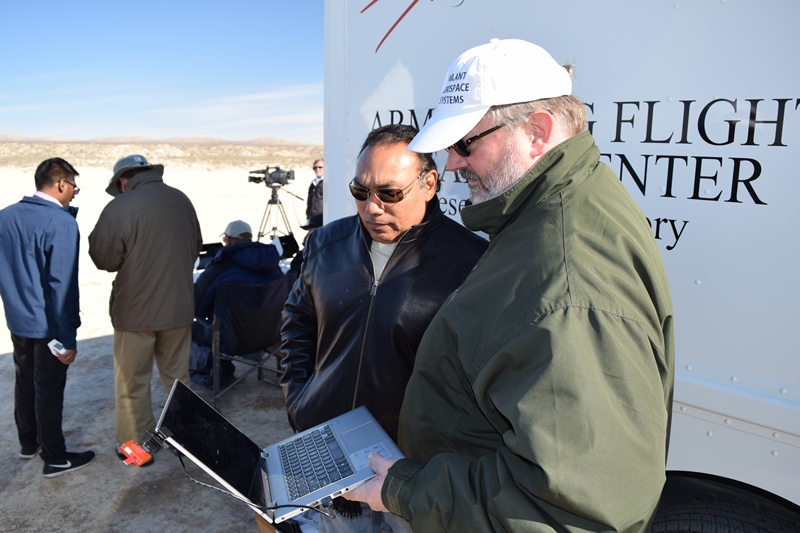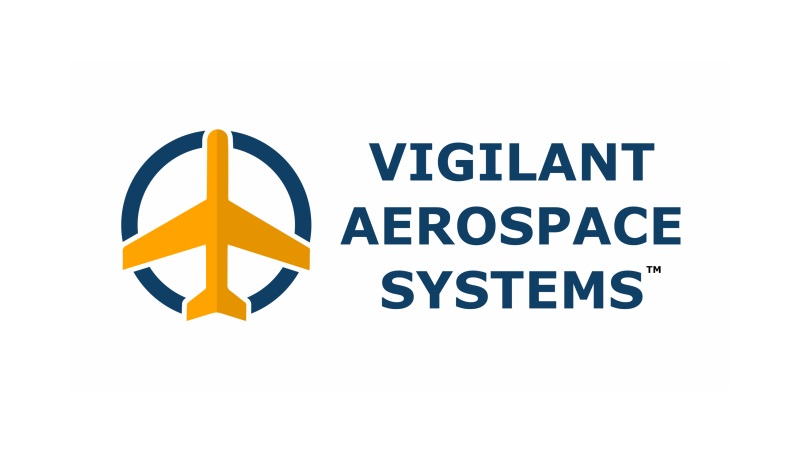 Vigilant Aerospace Systems has signed a new license agreement with the National Aeronautics and Space Agency (NASA) extending the company’s existing detect-and-avoid and radar technology patent licenses to include military aviation applications.
This new license agreement allows the company to provide air traffic detection, tracking and automatic avoidance for unmanned military aircraft using its FlightHorizon family of products. The prior licenses included civilian aviation.
The company exclusively licensed NASA’s Patent No. 9,405,005 in 2016 and added NASA Patent No. 10,302,759 in June 2020, which expanded the innovations to include the use of radar and detect-and-avoid systems for unmanned aircraft. The two patents formed the basis for the company’s award-winning FlightHorizon products. The new license agreement with NASA extends the use of these innovations to include all military aviation.
Vigilant Aerospace Systems has signed a new license agreement with the National Aeronautics and Space Agency (NASA) extending the company’s existing detect-and-avoid and radar technology patent licenses to include military aviation applications.
This new license agreement allows the company to provide air traffic detection, tracking and automatic avoidance for unmanned military aircraft using its FlightHorizon family of products. The prior licenses included civilian aviation.
The company exclusively licensed NASA’s Patent No. 9,405,005 in 2016 and added NASA Patent No. 10,302,759 in June 2020, which expanded the innovations to include the use of radar and detect-and-avoid systems for unmanned aircraft. The two patents formed the basis for the company’s award-winning FlightHorizon products. The new license agreement with NASA extends the use of these innovations to include all military aviation.
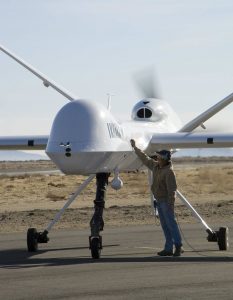
NASA Ikhana, a civilian General Atomics Predator-B, preparing for testing at NASA Armstrong Flight Research Center. (Photo: NASA)
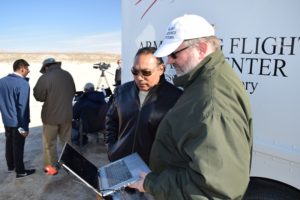
NASA Engineer Ricardo Arteaga and Vigilant Aerospace CEO Kraettli Epperson on-site for beyond line-of-sight testing at NASA Armstrong
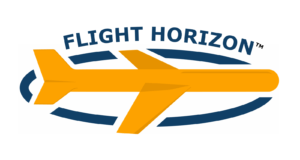
The FlightHorizon System
Vigilant Aerospace Systems provides the FlightHorizon family of detect-and-avoid and airspace management products. The FlightHorizon system provides air traffic monitoring and avoidance advisories to help drones maintain required well-clear distances from other aircraft and is designed to allow for safe drone flight beyond the visual line-of-sight (BVLOS) of the pilot. The company’s primary product is currently being used in multiple NASA and FAA projects, is used by multiple FAA Integration Pilot Project (IPP) teams, and the company has co-authored multiple research papers on the system with NASA. The company has obtained a US State Department Commodity Jurisdiction (CJ) ruling to allow for export of the product outside the US without additional licensing, in most cases.Licensed Patents
- U.S. Patent No. 9,405,005 – “Automatic dependent surveillance broadcast (ADS-B) system for ownership and traffic situational awareness”
- Google Patents [Link]
- U.S. Patent and Trademark Office (USPTO) [Link]
- Abstract:The present invention proposes an automatic dependent surveillance broadcast (ADS-B) architecture and process, in which priority aircraft and ADS-B IN traffic information are included in the transmission of data through the telemetry communications to a remote ground control station. The present invention further proposes methods for displaying general aviation traffic information in three and/or four dimension trajectories using an industry standard Earth browser for increased situation awareness and enhanced visual acquisition of traffic for conflict detection. The present invention enable the applications of enhanced visual acquisition of traffic, traffic alerts, and en-route and terminal surveillance used to augment pilot situational awareness through ADS-B IN display and information in three or four dimensions for self-separation awareness.
- U.S. Patent No. 10,302,759 – “Automatic dependent surveillance broadcast (ADS-B) system with radar for ownship and traffic situational awareness”
- Google Patents [Link]
- U.S. Patent and Trademark Office (USPTO) [Link]
- Abstract:The present invention proposes an automatic dependent surveillance broadcast (ADS-B) architecture and process, in which priority aircraft and ADS-B IN and radar traffic information are included in the transmission of data through the telemetry communications to a remote ground control station. The present invention further proposes methods for displaying general aviation traffic information in three and/or four dimension trajectories using an industry standard Earth browser for increased situation awareness and enhanced visual acquisition of traffic for conflict detection. The present invention enable the applications of enhanced visual acquisition of traffic, traffic alerts, and en-route and terminal surveillance used to augment pilot situational awareness through ADS-B IN display and information in three or four dimensions for self-separation awareness.
- “Vigilant Aerospace Partners with Oklahoma State University in NASA Research Project on Weather Hazards and Drone Safety.” Apr 14, 2020
- “FlightHorizonX Provides Airspace Monitoring, Data Logging for NASA Supersonic Flights Near Galveston.” 6 November 2018
- “NASA Uses FlightHorizonX to Track Experimental Transponder for Supersonic Flights, New FAA Standards.” 25 September 2018
- “New NASA Report Highlights Aerospace Projects Utilizing FlightHorizon.” 18 July 2018
- “Vigilant Aerospace Developing FlightHorizonX for Tracking and Safety of Supersonic Aircraft and Spacecraft.” 15 April 2018
- “FlightHorizon Selected by NASA Commercial Supersonic Technology Program 2018-2019 for Airspace Situational Awareness, Flight Logging.” 2 April 2018
- “FlightHorizon Used by NASA and DLR in Flights over Germany for Airspace Safety, Flight Logging and Real-Time Flight Formation.” 10 February 2018
- “NASA Engineer & Inventor of Patent Behind FlightHorizon Discusses UAS Innovation.” 29 August 2017
- “FlightHorizon Used in NASA SonicBAT Research Flights for Situational Awareness, Airspace Logging.” 29 August 2017
- “Vigilant Aerospace Accepts Nation’s Highest Federal Tech Transfer Award at Federal Laboratory Consortium National Meeting.” 28 April 2017
- “FlightHorizon Recognized by FLC with National Award for Excellence in Technology Transfer.” 8 February 2017
- “Vigilant Aerospace Completes Beyond Line-of-Sight UAS Detect-and-Avoid Flight Testing at NASA Armstrong.” 27 January 2017
- “New 90-second Video: NASA Beyond Line-of-Sight Detect-and-Avoid Flight Tests of FlightHorizon.” 9 February 2017
- “Vigilant Aerospace Partners with NASA in Space Act Agreement to Demonstrate Detect-and-Avoid Technology.” 23 September 2016
- “FLC Far West Recognizes FlightHorizon as 2016 Outstanding Commercialization Success.” 20 September 2016
- “Vigilant Aerospace Partners with NASA on Unmanned Traffic Management (UTM) Research and Development for Low Altitude Drone Operations.” 3 August 2016
- “USPTO Publishes NASA Patent Licensed by Vigilant Aerospace for FlightHorizon Software.” 2 August 2016
- “AIAA Publishes NASA Paper About Detect-and-Avoid.” 15 June 2016
- “NASA Announcement of Licensing Agreement.” 25 February 2016
- “Vigilant Aerospace Signs New NASA Patent License.” UAS Weekly; 9 June 2020.
- “Vigilant Aerospace adds radar data to boost detect-and-avoid capabilities.” Unmanned Airspace; 9 June 2020.
- “Vigilant Aerospace Signs New NASA Patent License for Radar Use in Detect-and-Avoid and UTM.” UAS Vision; 29 June 2020.

